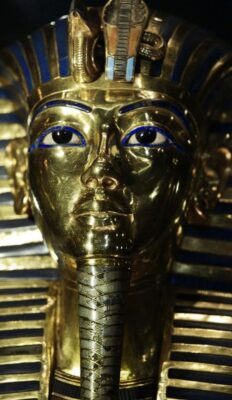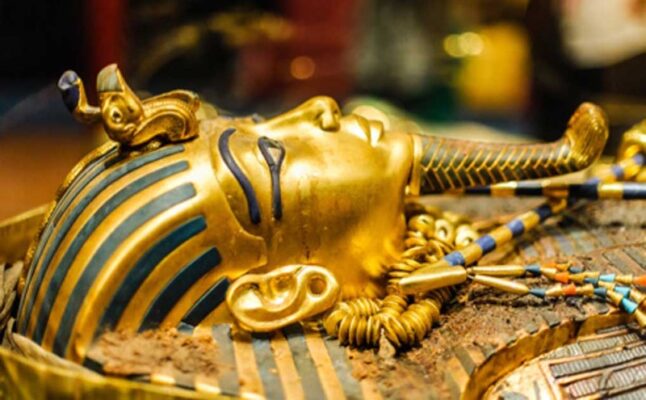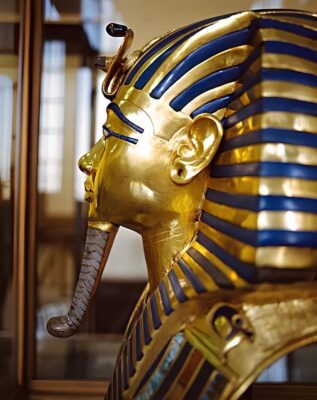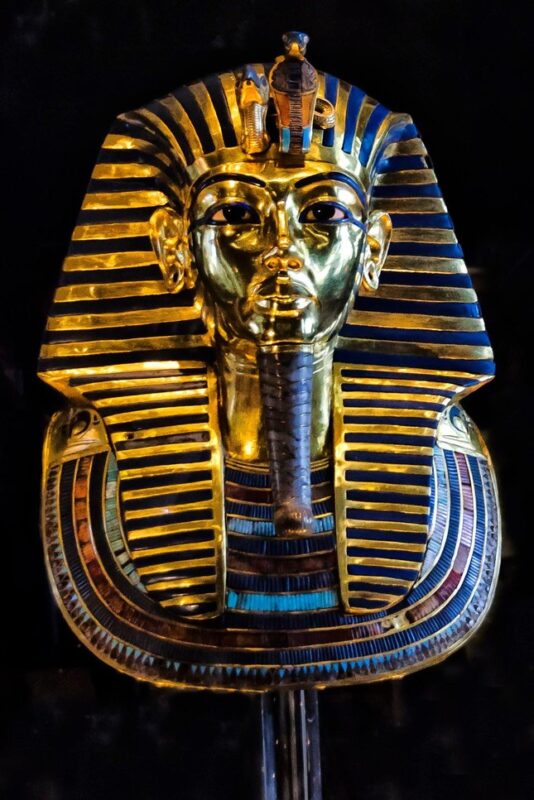Tutankhamun’s Golden Mask, displayed at the Egyptian Museum in Cairo, is more than just a historical artifact. It is a stunning masterpiece of ancient Egyptian craftsmanship, carrying profound cultural and spiritual significance. Let’s delve into the fascinating details of this iconic treasure and uncover the rich history behind its creation and discovery. Let’s explore more mysteries with archeology. dulichvn.net

The Location and Significance of Tutankhamun’s Golden Mask
Where to Find the Mask
The golden mask of Tutankhamun is housed on the upper floor of the Egyptian Museum in Cairo, attracting countless visitors each year. As one of the most admired artifacts of ancient Egypt, it holds an unparalleled place in the history of art and archaeology.
A Masterpiece of Art
Crafted with extraordinary precision, the mask portrays the young pharaoh’s serene and timeless face. The intricate design reflects the advanced metalworking skills of ancient artisans and their commitment to preserving the king’s legacy.
The Purpose Behind the Mask
This magnificent artifact was created with the belief that Tutankhamun’s soul could recognize his visage and return to his mummified body, ensuring a glorious resurrection in the afterlife.

Discovery of the Golden Mask
Howard Carter’s Remarkable Find
In 1925, archaeologist Howard Carter uncovered the mask during the excavation of tomb KV62 in the Valley of the Kings. This discovery, one of the most significant in Egyptology, revealed treasures that had remained untouched for over 3,000 years.
The Mask’s Placement in the Tomb
Originally, the golden mask was placed atop the wrapped mummy of Tutankhamun, resting within his coffin. Its position and preservation highlighted its importance in ancient funerary practices.
Inscribed Spells for Protection
The mask is inscribed with a magical spell from the Book of the Dead, designed to provide divine protection and guidance to the pharaoh in the afterlife, safeguarding his body and soul.

Symbolism and Cultural Significance
The Uraeus and Its Meaning
Prominently featured on the mask’s forehead is the uraeus, a royal cobra known as Wadjet. This emblem symbolizes Lower Egypt and represents the pharaoh’s divine authority.
Nekhbet: The Vulture of Upper Egypt
Alongside Wadjet, the vulture Nekhbet represents Upper Egypt. Together, they signify Tutankhamun’s reign over both regions, a recurring theme in Egyptian royal iconography.
Comparisons with the Narmer Palette
The combination of Wadjet and Nekhbet echoes the symbolism found on the Narmer Palette, emphasizing the unity and power of the pharaoh’s rule over a unified Egypt.
See more: The Dragon’s Eye: A Natural Wonder in Lancashire, England
Conclusion: An Icon of Ancient Egypt
Tutankhamun’s golden mask is not just an artifact; it is a window into the spiritual and political world of ancient Egypt. Its craftsmanship, history, and symbolism continue to captivate and inspire, offering a timeless connection to one of the most fascinating civilizations in human history.


CÁC TIN KHÁC
Mark Twain & Olivia Langdon: A 36-Year Love Story Filled with Laughter and Devotion
The Tollund Man: A 2,400-Year-Old Mystery Preserved in a Danish Bog
Skara Brae: Scotland’s Hidden Neolithic Village
Porta Nigra: The Hidden Depths of Trier’s Iconic Roman Gate